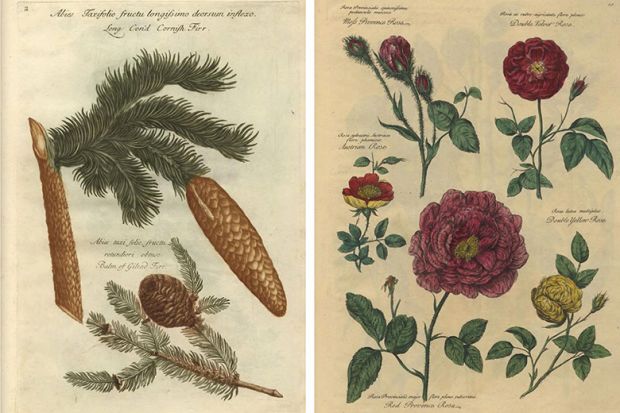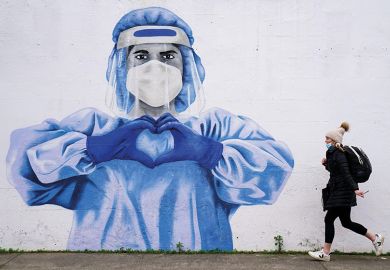Hans Sloane (1660-1753), born in Killyleagh, County Down, of Lowland Scots stock, studied chemistry at Apothecaries’ Hall, London. Following four years of medical studies, he spent time in Paris at the Jardin du Roi and Hôpital de la Charité before investigating medicinal plants and other topics in Montpellier, where he developed his interests in classificatory systems. He received his medical degree at the University of Orange (1683) before returning to London, where, in 1687, he was admitted to the Royal College of Physicians.
Appointed physician to Christopher Monck (Second Duke of Albemarle from 1670), he travelled to Jamaica (where His Grace had been appointed Governor). There, he spent the next 15 months collecting flora and fauna, making copious notes on various aspects of the island’s natural history. After Albemarle succumbed to bibulous excess, Sloane and the large collection of specimens he had amassed accompanied the ducal cadaver back to England in 1689, where he remained in the service of the duchess before setting up in practice in Bloomsbury, acquiring members of polite society (including royalty) as patients. He began to publish his Jamaican observations, first in the Transactions of the Royal Society , and then in the huge Catalogus plantarum (1696), in which his attention to indexing, collation, rationalisation and improvements in nomenclature were enormous contributions to the advancement of science.
Further successes included a University of Oxford degree, election to the College of Physicians of Edinburgh, presidency of the Royal College of Physicians, and appointments as physician to Queen Anne and George II. Sloane acquired a baronetcy in 1716 (one of the first physicians to be so honoured), and, as first secretary of the Royal Society from 1695, was responsible for publication of the Philosophical Transactions. He promoted inoculation against smallpox, quinine distilled from “Peruvian bark” and even milk chocolate. His avid collecting, cataloguing and publishing ventures gained him international recognition: his formidable reputation and generous legacies (including a huge library of manuscripts and printed books) led to the establishment by Act of Parliament (1753) of the British Museum in Montagu House, Bloomsbury.
There have been previous studies of Sloane, including splendid contributions by Arthur MacGregor, but this handsomely illustrated tome emphasises his role in the emergence of modern knowledge in the transformation from what was known as the cabinet of curiosities into major institutions of the Enlightenment. However, James Delbourgo is decidedly shaky on matters Irish. As the Great Parchment Book of The Honourable The Irish Society shows, Ulster was not “cleared” of its Catholic inhabitants, nor were Catholics “disqualified” from holding property in the aftermath of the Flight of the Earls in 1607. He also seems to be under the impression that the City of London was involved in colonising all Ulster, when it was concerned with only one area, specially created for it, called County Londonderry. Coleraine is in County Londonderry, not Down; the Giant’s Causeway is in County Antrim; County Down speech and dialects, with origins in an admixture of Lowland Scots, English and some Gaelic thrown in, could never be described as “brogues”; and if Sloane’s parents had moved from Ayrshire to Ulster in 1603, his birth in 1660 was almost biblical in its miraculousness.
James Stevens Curl is the author of The Honourable The Irish Society and the Plantation of Ulster, 1608-2000.
Collecting the World: The Life and Curiosity of Hans Sloane
By James Delbourgo
Allen Lane, 544pp, £25.00
ISBN 9781846146572
Published 15 June 2017




